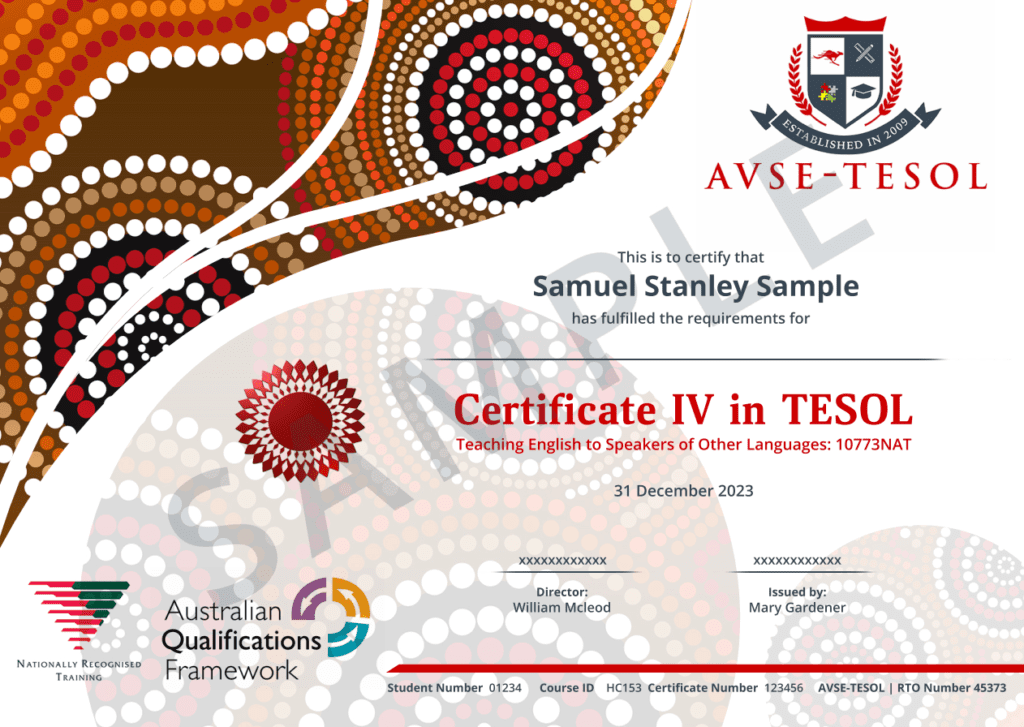What is the difference between TEFL and TESOL?
…..the ‘age-old’ TEFL, TESOL debate
Ahh yes, the great TEFL versus TESOL debate! My mate Robert says banter on this topic can be tracked back to when Jesus was a boy, but I suspect he’s stretching the truth. Are TEFL and TESOL the same thing? In my opinion, based on what I have witnessed first-hand while teaching in Southeast Asia over rapidly approaching 20 years – there is no substantive difference between TEFL and TESOL. This in turn begs the question – if there is no substantive difference, why do we have them both? Good question! Allow me to share my views on this subject matter.
Should it be TEFL or TESOL?
It’s ironic we have so many confusing acronyms for teaching English in an industry that supposedly seeks to make English less confusing for non-native speakers! TEFL, TESOL, EF, ELT, ESL, TESL – and the list goes on. The TEFL and TESOL acronyms are the ones that usually dominate conversations about teacher certification and what takes place in a classroom environment. TEFL and TESOL are essentially ‘umbrella’ terms. I concede they’re both pedagogical methodologies – if you can be bothered ‘splitting hairs’ with a sizable carving knife.

What’s in an acronym?
TEFL is an acronym for ‘Teaching English as a Foreign Language’, while TESOL is ‘Teaching English to Speakers of Other Languages’. Then there is the now largely superseded TESL, which is ‘Teaching English as a Second Language.
All three refer to ‘teaching English to people who are non-native speakers’ and, in my view, that’s what really counts in the end. So, why is there a distinction between ‘foreign language’ and ‘other languages’? Furthermore, does it really matter? The ‘why’ largely comes down to the context in which a non-native English speaker learns English. It’s usually one of the following:
A) To assimilate into an English-speaking community: This largely applies to people who have immigrated, or are intending to immigrate, to an English-speaking country. Typically, English-language skills must be acquired in the context of, and alongside, other sociocultural metrics.
B) To communicate effectively in specific English-use situations: This is particularly applicable in non-English speaking countries where there’s a need to communicate with English-speaking businesses, and participate in global conversations. Learning English to communicate in specific English-use situations may only require proficiency in the four key skills – reading, writing, listening and speaking – because culturally and socially, nothing changes for the student.
So, in one scenario English skills need to be taught as part of a sociocultural ‘context package’. In the other, the focus is more on teaching what’s needed for particular situations. Does that require two different pedagogical approaches? In the beginning that undoubtedly was the perception. However, these days we believe our English-language teachers are capable of adapting their teaching to suit the context. Indeed, we train them to be able to do so. That means the lines between TEFL and TESOL have blurred to the point where there is little, if any, practical difference between them. True, there are academic purists ‘swanning’ around the globe running seminars and the like who cling to outdated views and literally make a living out of splitting hairs over the difference between TEFL and TESOL.

History of TEFL, TESL and TESOL
TEFL and TESL (Teaching English as a Second Language) started life as EFL and ESL, and have their roots in the 1960’s (note my reference to Robert in paragraph one – a long time after Jesus was a boy). That’s when University of Illinois Linguistics Professor Braj B Kachru came up with his concept of ‘World Englishes’. He believed there are differences between ‘English use in non-English speaking countries’ and ‘English use in English-speaking countries’.
Kachru’s ideas essentially remained ‘on the drawing board’ until 1978, the year of two watershed conferences held in Hawaii and Illinois respectively. The Illinois conference was organised by Kachru himself. At those conferences, people from both English and non-English speaking countries came together to talk about – yep, you guessed correctly – English. The conferences were particularly notable in that, for the first time, English-speaking communities globally were seen as ‘an entity’ irrespective of whether English was a primary, subsidiary, or foreign language. This allowed participants to gain a new understanding of English language usage across cultures and nationalities. In particular, it provided valuable insights into how: 1. the language itself varies culturally, 2. different ‘peoples’ acquire English skills, and 3. people who are bi or multilingual, use English.
It was also apparent that different countries have different reasons for wanting to acquire English language skills, and that it was important to distinguish between these reasons. For example, some countries without a culture of speaking English wanted to acquire a certain skill level in English to be understood internationally, and to participate in global conversations. Others, particularly those with an English-speaking colonial heritage, needed to consider how that language legacy should co-exist with their own native dialects. Then there were the English-speaking countries, the UK, US, Australia and suchlike, each with significant non-English speaking migrant populations, that had their own issues to deal with.

Rise of the acronyms
Long story short, these conferences led to what was, in essence, a ‘status’ classification system for English based on the way English language skills were perceived and acquired by a community. That in turn led to the coining of the phrases ‘English as a Foreign Language (EFL)’ and ‘English as a Second Language (ESL)’. The T for Teaching was added to the front for teaching scenarios. EFL referred to the status of English as a ‘foreign language’ in countries where it wasn’t widely spoken, Japan is one example. ESL indicated that English was spoken by a significant portion of the population, but wasn’t necessarily the primary language of the speaker. India comes to mind when I think about a country where English is widely spoken, but isn’t always the primary language of the speaker.
Kachru’s ‘Three Circles Model’
In 1985, Kachru developed his famous ‘Three Circles Model’ of English usage that further helped cement the system. The Inner Circle comprises primary English-speaking countries like Australia, the UK, Canada, New Zealand, the US and the like. What I’d call the middle circle (Kachru calls it the ‘Outer circle’) includes countries with a significant population of bi and multilingual people who speak their national language – and often a native dialect as well – plus English. Gosh, that’s a lot of languages for one person. Again, India is a good example. In the outer circle (Kachru calls it the ‘Expanding circle’) are countries where English is rarely spoken, for example, China and Russia.
Finally, there was TESOL
The original term ESL/TESL assumes that English is a ‘second’ language for the speaker. However, many people – in many countries – are in fact multilingual, and English may be their third, fourth or even fifth language. To address this, some really smart folks came up with the less restrictive ‘Speakers of Other Languages’ or TESOL for short.
There you have it! How TEFL, TESL, and TESOL came to be! But, to get back to the topic at hand, does all this mean there is difference between TEFL and TESOL from a pedagogical perspective? In a word, no, but that doesn’t stop the continued perception that there is. This ongoing debate about ‘nothing’, understandably leads people who are thinking about teaching English abroad being confused about whether their teaching credentials should include government-regulated TEFL or TESOL certification. Allow me to do my bit to end the confusion. Either is absolutely fine, provided it’s a product of nationally-recognised training (government regulated) in the country of origin.

‘Perceived’ difference between TEFL and TESOL
Reflecting, even for a fleeting moment, on the difference between TEFL and TESOL according to the pedagogical ‘purists’, illuminates how lame the discussion is. According to folks in the ‘TEFL and TESOL are different camp’, the polarity of TEFL and TESOL is evidenced by the ‘linguistic teaching environment’, the ‘target audience’ and the emphasis in each approach – TEFL focusses on English language skills whereas TESOL adopts a more integrative approach. Seriously, it could equally be argued that what a purist draws upon as evidence for polarity, could be used to show commonality. Regardless, let’s have a closer look at the ‘perceived’ differences.
1. Linguistic teaching environment
This view buys into the argument that TEFL (specifically) is teaching English in environments where it has ‘foreign’ language status, and TESOL specifically is teaching English in English-speaking environments where it has primary or subsidiary status, and consequently your students more than likely have exposure to the language.
According to this argument, as an English language teacher in a country like Vietnam where English is considered a foreign language, you should have a TEFL certification. However, if you are teaching English to Vietnamese immigrants in Australia for example, or any English-speaking community, the context changes. You are now teaching English in an English-speaking community to people whose primary language is not English. That means you should have TESOL Certification if you want to work as an English teacher in this context, according to the ‘purists’.
Here’s a critical point. Such a narrow view doesn’t factor in how much pedagogical processes have changed since these acronyms were first coined. ‘Back in the day’, difference between TEFL and TESOL based on the intended teaching environment may have existed. However, any difference has blurred over time. Course providers on both ‘sides’ recognise the need to produce teachers competent at teaching English language skills in any linguistic teaching environment.

What’s the ‘take home point’ here? There is no significant difference between TEFL and TESOL certifications from a teaching location perspective. Both acronyms recognise that language literacy is part and parcel of a package of cultural and social mores. Both use effective language teaching methodologies and student-centric teaching approaches that cover a range of scenarios. As a teacher, you are taught to adapt these as required to suit your particular teaching environment.
Ultimately, it doesn’t matter where you’re teaching English, what its status is in that country, or the knowledge and skills of your students. What matters is that your teaching certification, TEFL, TESOL, CELTA or something else, is a product of nationally-recognised training (government regulated) in the country of origin. This is what will get your certification recognised across borders, not the acronym.
2. Target audience
If you are considering enrolling in an ESL teacher training programme, you’ll come across websites saying you should get TEFL Certification if you plan to teach English in countries A, B or C. Or, that you should get TESOL Certification if you want to teach English in countries X, Y or Z. Is this true? The short answer is, ‘no’. Any TEFL or TESOL course provider that tells you there is substantive difference between TEFL and TESOL certification, is pushing their own barrow. The reality is, in the classroom environment, well-trained ‘TEFLers’ and ‘TESOLers’ draw upon the same knowledge, skills, methodologies, and principles. If you hold a TEFL Certificate that’s a product of government-regulated training, you’ll be equipped to teach in what was considered the domain of a TESOL person ‘back in the day’. Equally, if you hold TESOL Certification, nowadays you’ll be equipped to teach classes that would have been considered more suitable for a TEFL person.

The core purpose of decent TEFL and TESOL certification programmes is to ensure that you have the knowledge, skills, aptitude and government-regulated certification to teach English to non-native English speakers. Period!
What’s the ‘take home point’ here? Valid, government-backed TEFL and TESOL training programmes have the same target audience – aspiring English teachers, like you, who want to utilise their training wherever it’s needed. There is no real difference between TEFL and TESOL teacher training programmes, ideologically, pedagogically, or in any other way that matters.
3. TESOL is more integrative
Another ‘perceived’ difference between TEFL and TESOL that you’ll occasionally hear from the academic ‘purists’ is – TEFL is specifically about ‘teaching English language skills’ whilst TESOL recognises that English needs to be taught in a more ‘integrative’ way. This idea derives from those original categorisations of English acquisition skills. As I’ve mentioned, these days those lines are very much blurred, particularly when it comes to teaching you, the teacher.
True, TESOL emphasises teaching ‘functional language and effective communication’ skills that will assist students in ‘real-life’ English use situations (work, recreation, education, social settings and the like). To achieve this, TESOL incorporates course materials and activities that are applicable to the everyday lives of students. This helps them learn and practice English in ‘realistic’ situations.
The reality is that both TEFL and TESOL seek to provide English language learners with the real-life functional proficiency and communication skills needed to either assimilate into an English-speaking community or to communicate effectively in situations where English is used. Where you are teaching will determine the resources you have at hand to achieve this.

TESOL acknowledges that language is part of a holistic environment that includes social norms, cultural mores, and communication systems. Therefore, English proficiency skills are taught within this framework to help learners achieve successful assimilation into an English-speaking community.
We’ve known for some time that English learners need more than just language proficiency to assimilate well into everyday life in an English-speaking community. Again, the reality is that both TEFL and TESOL acknowledge this truth, so both teach you how to teach English within applicable cultural and social contexts. Obviously, these contexts will vary depending on whether you’re teaching English in an English-speaking community, or teaching people who just need to communicate effectively in standalone English-speaking situations. However, the core content and methodologies are the same regardless.
TESOL integrates English language instruction with other academic subjects to create a more effective holistic learning experience where the student simultaneously learns English whilst also furthering their knowledge in other subjects. Again, both TEFL and TESOL recognise the value of holistic learning experiences and can integrate English learning with other academic subjects. Granted, this may be easier to do somewhere like Australia than in Vietnam, but you are taught how to recognise and utilise opportunities as they arise.
For sound reasons, TESOL encourages and promotes opportunities for students to get more exposure to English-speaking communities outside the classroom. This helps them build confidence in their English skills, develop cultural awareness, build relationships with native English speakers, and integrate into English-speaking communities. Surprise, surprise, both TEFL and TESOL recognise the importance of interactive community initiatives for helping to improve students’ language development and build cultural awareness. As with the point above, this is going to be easier in an English-speaking community, but both TEFL and TESOL certification (assuming it’s government-regulated) equip English teachers with the skills to identify, create and implement opportunities for community engagement.
It’s correct to say that TESOL teaches students to recognise and adapt English use depending on social or cultural circumstances so they can effectively navigate different social settings. Once again, the reality is that both TEFL and TESOL training programmes recognise the importance of this, and incorporate sociolinguistic proficiency into their teaching curriculum.

Take home point: TEFL and TESOL provide the same core training, cover the same teaching and language acquisition theories and principles, and recognise the same cultural and sociolinguistic aspects of English language teaching. It is the validity, legitimacy, and quality of the certification you hold that’s important, not the acronym. There is no substantive difference between TEFL and TESOL.
What you need to know about TEFL and TESOL Certification
First: Focus on finding a legitimate, government-backed TEFL or TESOL qualification rather than worrying about which acronym is the ‘right’ one for you. The legitimacy, not the acronym, is what counts on the ground in ‘English-teaching land’.
Second: I would go so far as to suggest you avoid any course (TEFL or TESOL) offered by a provider who tells you that one is better than the other. Why? Almost certainly the person doesn’t know what they’re talking about, or if they do, it’s about selling their product.
Third: At the end of the day, ESL teacher training is not about any perceived difference between TEFL and TESOL, but rather mundane things like: the quality of the course content, the legitimacy of the course – a course that’s government-regulated training will open far more doors than one that isn’t – the qualifications held by the Instructors (are they certificated vocational trainers or ‘garden-variety’ teachers) and the reputation of the course provider with employers (schools).
So, what’s the difference between TEFL and TESOL?
In today’s English-language teaching environment the TEFL versus TESOL debate from a qualification perspective is largely irrelevant. You could even say the original acronyms have outlived their use by date! Although differences in the context of English language teaching still exist, the reality is that any practical difference between TEFL and TESOL has blurred over time. This is largely because both recognise that English-language teaching, and teachers, need to be able to adapt to different teaching contexts. Someone teaching EFL needs to also be able to teach ESL and vice versa. Then there is also the very real truth that – English-language students and organisations that employ English-language teachers – mostly don’t care about the acronym on your teaching certification. They’re more concerned about your certificate being a valid, government-regulated qualification.
About the author: Peter Goudge is the Managing Director (and founder) of AVSE-TESOL in Australia, Vietnam and Cambodia. Among other things, Peter is passionate about quality teaching and learning environments, outcomes for teachers and students – and valid teaching credentials. Check out the AVSE-TESOL website: www.avse.edu.vn












Recent Comments